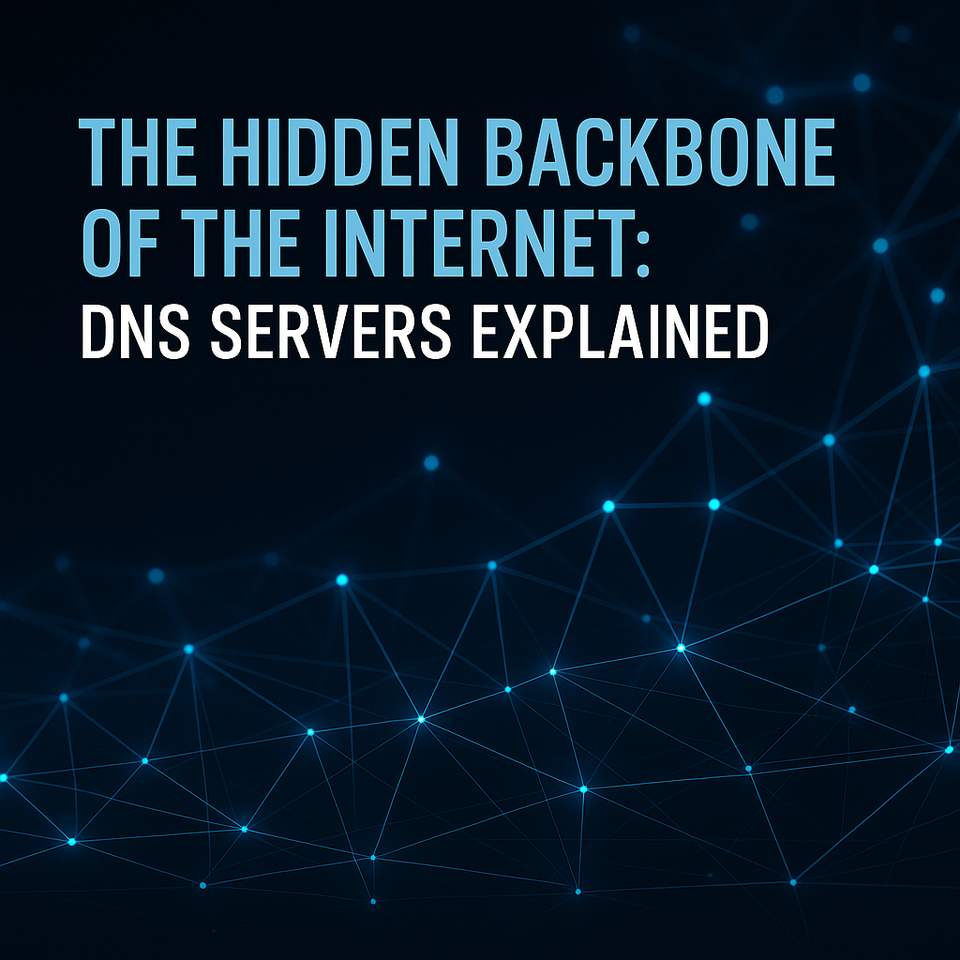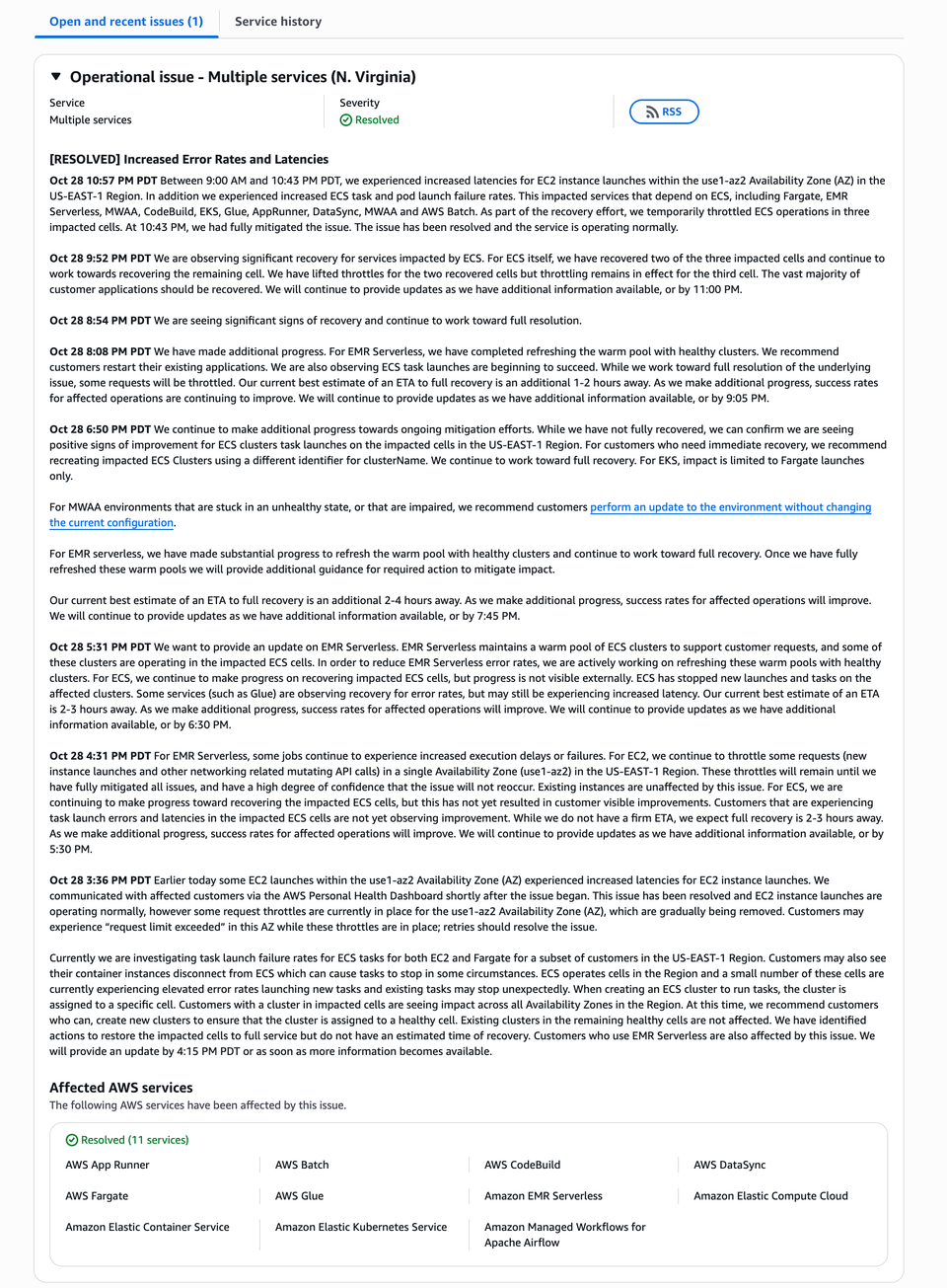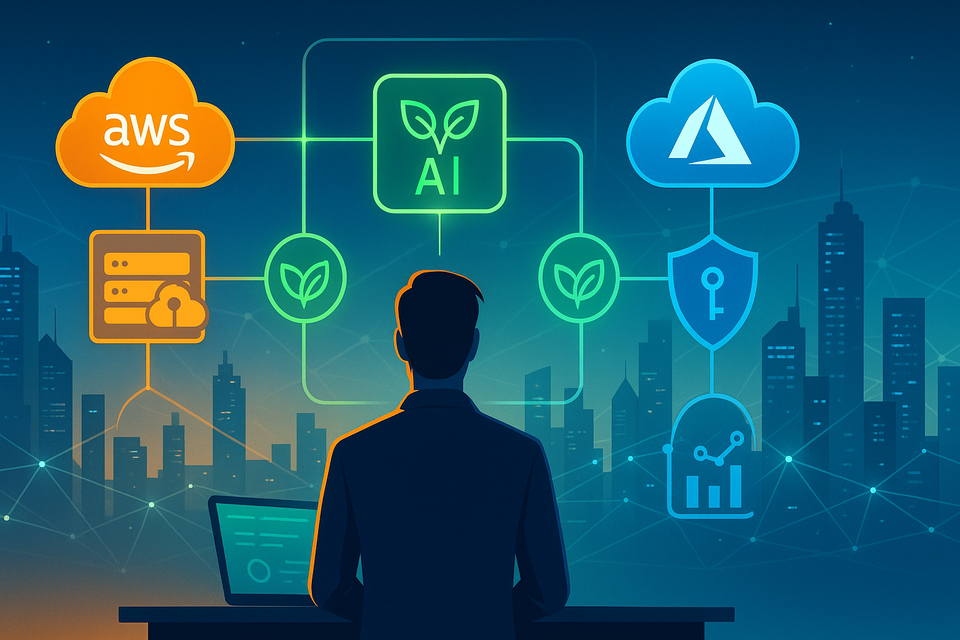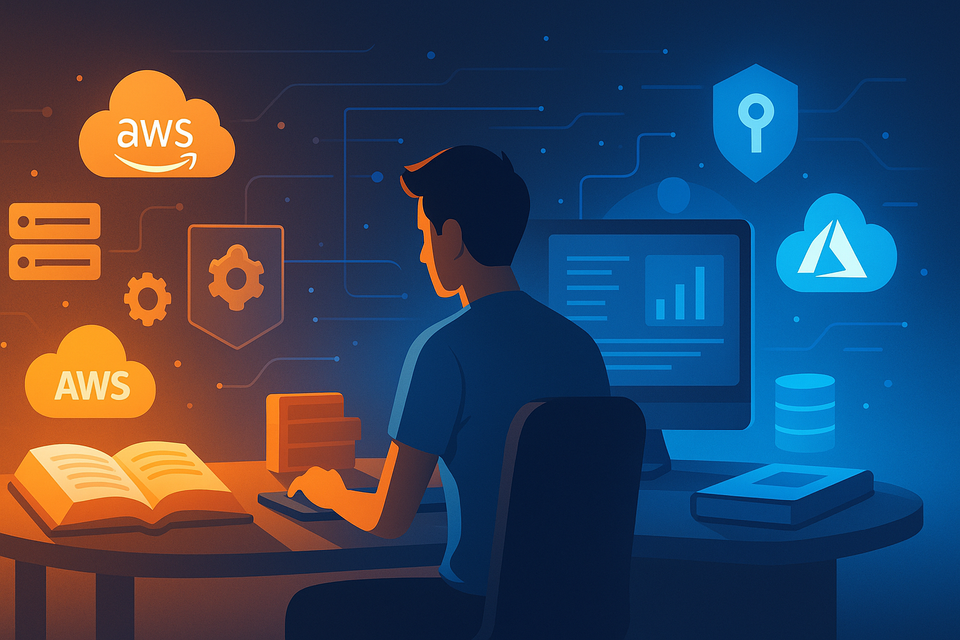Lessons from the AWS US-EAST-1 Outage: What Cloud Engineers and System Administrators Can Learn
The October 2025 AWS US-EAST-1 outage revealed how even the most advanced infrastructures can falter — and what every cloud engineer can learn from it.
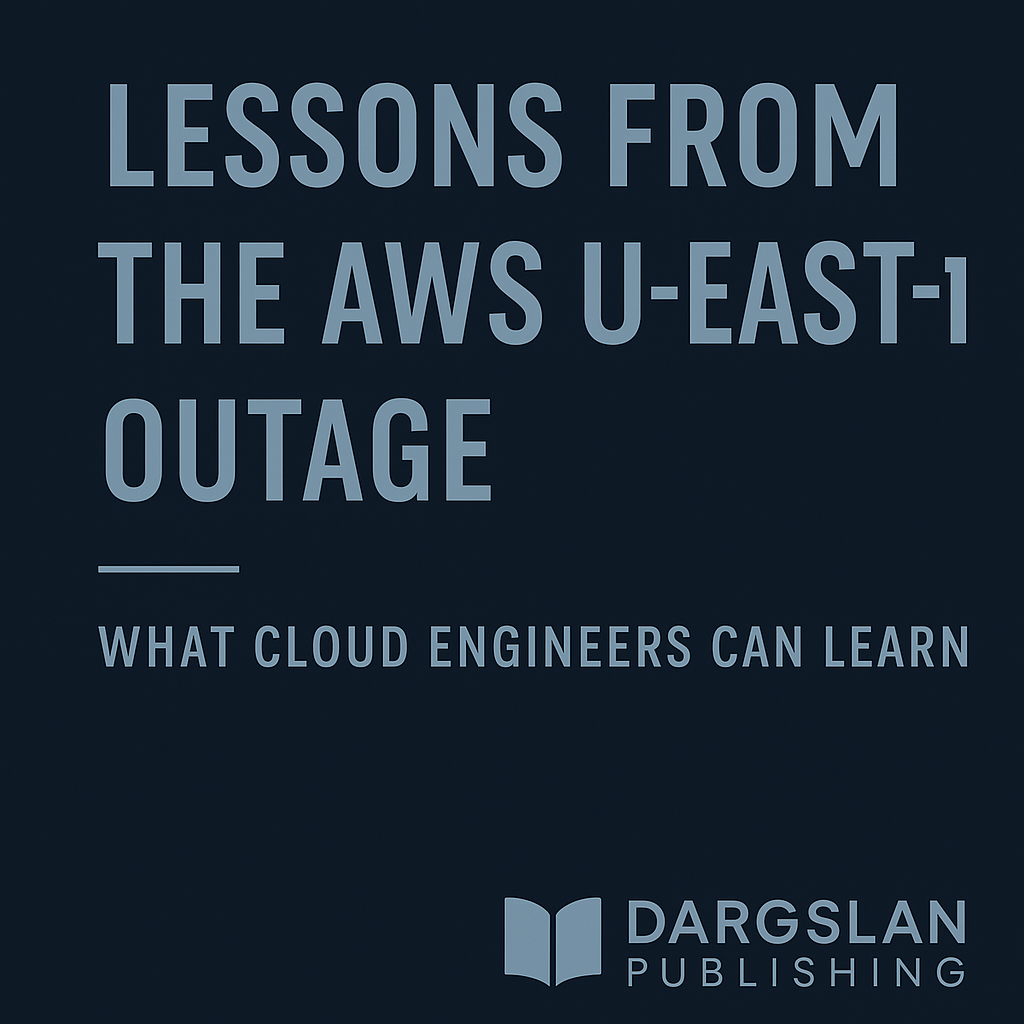
Introduction
On October 28, 2025, Amazon Web Services (AWS) faced a significant disruption in the US-EAST-1 region, primarily affecting the use1-az2 Availability Zone.
For roughly 14 hours, customers across the world experienced failures and delays in core compute services such as ECS, EC2, Fargate, EKS, EMR Serverless, Glue, and MWAA.
While AWS restored full functionality by late evening, the event reignited a timeless conversation in the DevOps and systems community: how do we design for resilience when even the most reliable cloud provider can stumble?
This article examines the key technical and operational lessons from the outage — insights that every architect, DevOps engineer, and system administrator can apply to strengthen reliability, observability, and preparedness in their own environments.
1. Understand the Hidden Complexity of “Managed” Services
One of the first takeaways is that managed does not mean invincible.
AWS ECS, Fargate, and EMR Serverless abstract away container orchestration and infrastructure, but behind the scenes they depend on EC2 instances, control-plane databases, networking layers, and internal API orchestration cells.
When a control-plane cell becomes unhealthy — as it did in this case — all dependent services that rely on it inherit the failure.
Key lesson
Managed services simplify operations, but they also concentrate risk.
Always map which managed components your workloads depend on.
Tools like the AWS Service Map and the Trusted Advisor dependency view can help visualize inter-service reliance.
If a managed service like ECS sits at the core of multiple applications, you must plan alternate deployment paths, such as EKS or direct EC2 auto-scaling groups, in case of control-plane impairment.
2. Multi-AZ Design Is Necessary, Not Optional
The outage demonstrated that single-AZ deployments are a ticking time bomb.
Although AWS isolates failures by design, Availability Zones are still physical data centers — and any AZ can become unavailable due to networking or internal orchestration issues.
Many affected customers discovered that their ECS clusters and Fargate tasks were pinned to use1-az2, meaning no automatic failover occurred.
What you can do
- Distribute workloads across at least two AZs in every region.
- Use ECS capacity providers that span multiple instance groups.
- In EKS, configure node groups across multiple subnets.
- Test that your load balancers route traffic properly when an AZ goes dark.
A true multi-AZ strategy should include state replication, not just compute redundancy. Databases, caches, and message queues must also replicate across zones, or your failover will simply move the bottleneck.
3. Implement Regional Redundancy for Critical Systems
While multi-AZ protects against localized cell failures, regional redundancy shields you from larger systemic outages.
AWS US-EAST-1 has historically been one of the busiest and occasionally most failure-prone regions.
Customers running mission-critical workloads should implement multi-region architectures using services like:
- Route 53 with health-check-based DNS failover
- S3 Cross-Region Replication
- Aurora Global Database
- AWS Backup Vault Lock with region isolation
Even a simple active-passive regional setup can prevent downtime that costs thousands of dollars per minute.
4. Observability Must Include the Control Plane
Most organizations monitor application health and infrastructure metrics, but few watch the cloud control plane itself.
During the outage, many teams saw that their applications were “healthy” until deployment or scaling failed — revealing that their metrics only covered running containers, not orchestration latency or ECS API failures.
Extend your monitoring
Add metrics such as:
- ECS task launch success rate
- API throttling errors (429)
- ECS agent heartbeat status
- EC2 launch time latency
- AWS Service Health Dashboard integration via EventBridge
Observability must extend from application performance to orchestration reliability.
Only then can you detect systemic issues before users feel them.
5. Design for Throttling and Backoff
AWS intentionally applied API throttling during the event to stabilize ECS operations.
While throttling helped AWS recover, it caused cascading failures for customers who lacked robust retry logic.
Engineering takeaway
Every API call in your automation should assume possible throttling.
Adopt exponential backoff with jitter in SDKs and CI/CD pipelines.
For example, when deploying via boto3, include automatic retry handlers.
Never build deployment logic that fails permanently after one error — especially when scaling tasks or provisioning infrastructure.
6. Automation Should Be Pausable
Many teams discovered their automation pipelines made things worse.
Auto-scaling attempted to launch new tasks continuously in the affected AZ, amplifying the API load and increasing throttling pressure.
A more resilient design allows pausing automation when regional health degrades.
Consider using:
- Feature flags to stop non-critical scaling.
- CloudWatch alarms that trigger “safe mode” automation when error rates spike.
- EventBridge rules to delay deployments when the Service Health Dashboard reports ongoing issues.
Sometimes the smartest automation is the one that knows when to wait.
7. Build for Partial Degradation, Not Binary Uptime
Traditional thinking frames availability as up or down.
In distributed systems, you should design for graceful degradation.
During the AWS outage, teams that architected their platforms for partial functionality — read-only modes, delayed background jobs, or cached responses — remained operational even when backend tasks failed.
Strategies for graceful degradation
- Use message queues to buffer asynchronous work.
- Serve cached data during backend API timeouts.
- Allow background processing to retry later rather than blocking front-end operations.
Users often tolerate limited functionality far better than complete downtime.
8. Keep a Runbook and Practice It
Every outage reminds us that documentation is only as good as its execution.
Many engineers knew what to do — create new ECS clusters, redirect tasks — but struggled to coordinate actions under pressure.
Create actionable runbooks
- Include step-by-step instructions, not theory.
- Maintain pre-tested scripts for cluster migration and DNS failover.
- Store runbooks in accessible, version-controlled repositories.
- Conduct game days that simulate real incidents quarterly.
AWS itself frequently runs game days internally.
So should you.
9. Data Integrity Over Availability
When facing widespread throttling or task failures, the instinct is to “force restart everything.”
But restarts and retries can corrupt in-flight jobs or duplicate transactions.
During the AWS incident, customers who rushed to re-run ETL pipelines in Glue or EMR sometimes processed partial datasets twice.
Lesson
Protect data integrity first; restore speed later.
Design pipelines with idempotent operations, transaction locks, and checkpointing so you can safely resume after interruptions.
10. Diversify Compute Layers
The outage showed that ECS, Fargate, and Batch share control-plane dependencies.
When one layer stalls, so do the others.
Organizations that diversified workloads across EC2 Auto Scaling Groups, EKS clusters, and even Lambda functions had more recovery options.
Diversity in compute orchestration is akin to financial portfolio diversification: it reduces correlated risk.
11. Communicate Transparently During Crises
Technical excellence matters, but communication decides how your outage is perceived.
AWS provided frequent updates through the Service Health Dashboard — a model worth emulating internally.
For your own organization:
- Maintain a single source of truth (e.g., a status page).
- Send consistent updates at fixed intervals, even if there’s no new information.
- Avoid speculation; share verified facts.
- Keep customer-facing and internal communication channels separated but aligned.
Good communication buys trust; silence multiplies frustration.
12. Learn from the Post-Incident Review
AWS’s forthcoming Post-Incident Review (PIR) will likely highlight root causes and architectural fixes.
Use these reports as learning material.
Reading cloud-provider PIRs is one of the fastest ways to improve your own reliability practices.
Conduct internal PIRs too.
Every time you suffer downtime — even if small — record what failed, how it was detected, and what changes were made to prevent recurrence.
Turn every outage into a training session.
13. The Human Side of Reliability
Behind every automation and control plane sits a human team making quick decisions under pressure.
AWS engineers worked around the clock to isolate and repair the faulty ECS cells.
Resilience engineering emphasizes not only technology but also organizational preparedness:
- Cross-team collaboration
- Clear incident ownership
- Psychological safety for post-mortems
Blaming individuals after incidents creates fear.
Focusing on systemic improvement builds reliability culture.
14. Financial and Operational Awareness
Outages carry hidden costs — lost transactions, missed SLAs, overprovisioning during recovery.
Use events like this to revisit your business-continuity plans and SLA commitments.
Questions to ask:
- Do we have RTO/RPO targets defined and tested?
- How long can we sustain degraded operation before financial loss?
- Are our support contracts and AWS Enterprise Support plans appropriate for our risk level?
Understanding the cost of downtime helps justify investment in redundancy and monitoring.
15. Architectural Resilience Is a Continuous Process
No architecture is ever “done.”
Cloud environments evolve constantly — new services, new dependencies, new scaling behaviors.
Resilience must therefore be a living discipline, not a project milestone.
Adopt continuous resilience reviews:
- Evaluate design assumptions quarterly.
- Retire fragile components.
- Update automation for new AWS APIs.
Infrastructure that isn’t evolving is slowly decaying.
16. Key Takeaways for Cloud Professionals
- Map dependencies — know which managed services underpin your workloads.
- Design for multi-AZ and multi-region operation.
- Monitor orchestration layers as well as application performance.
- Handle throttling gracefully with exponential backoff.
- Build automation that can pause when the environment is unstable.
- Prioritize data integrity over immediate throughput.
- Prepare clear runbooks and practice them.
- Communicate regularly during incidents.
- Review and document every outage to fuel continuous learning.
These principles transform outages from catastrophic events into valuable resilience drills.
Conclusion
The October 2025 AWS US-EAST-1 outage is not the first, nor will it be the last large-scale cloud incident.
But each event reveals essential truths about complex systems: failures are inevitable, interdependencies amplify risk, and resilience is earned through deliberate design.
As engineers, our responsibility is to treat every disruption as a mirror of our architecture’s assumptions.
If a single regional cell can halt operations, it’s not merely AWS’s fault — it’s a signal that our own design boundaries are too narrow.
Building robust, fault-tolerant systems means anticipating these moments, preparing teams to respond calmly, and continuously investing in better automation and observability.
AWS recovered in under 14 hours, but the most valuable recovery is the one that happens within our own practices — the shift from reaction to anticipation.
Sponsored by Dargslan Publishing
Dargslan Publishing provides practical IT workbooks and guides for cloud, Linux, and DevOps professionals.
Explore technical series designed to help engineers build resilient systems and automate with confidence at dargslan.com.

